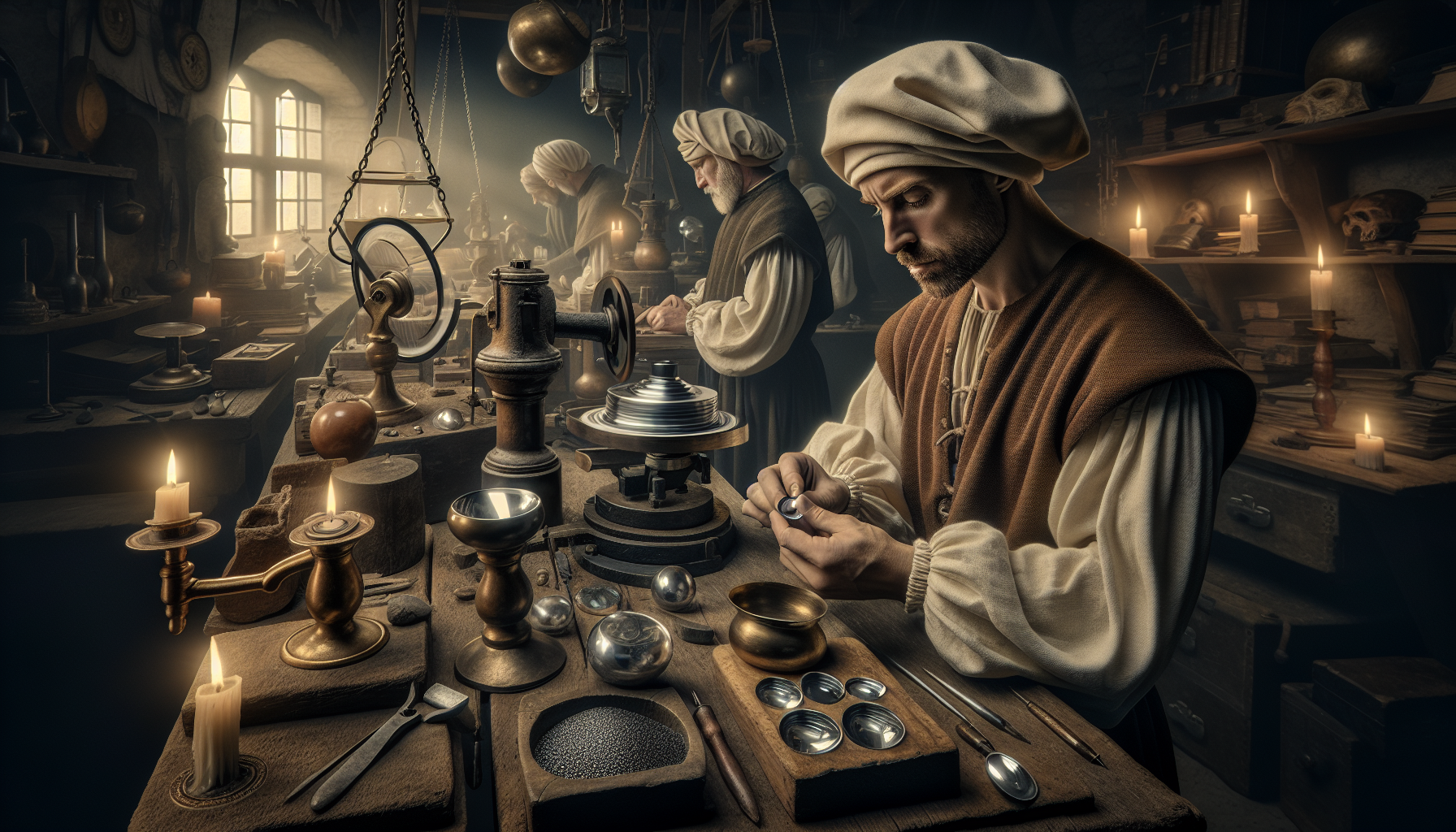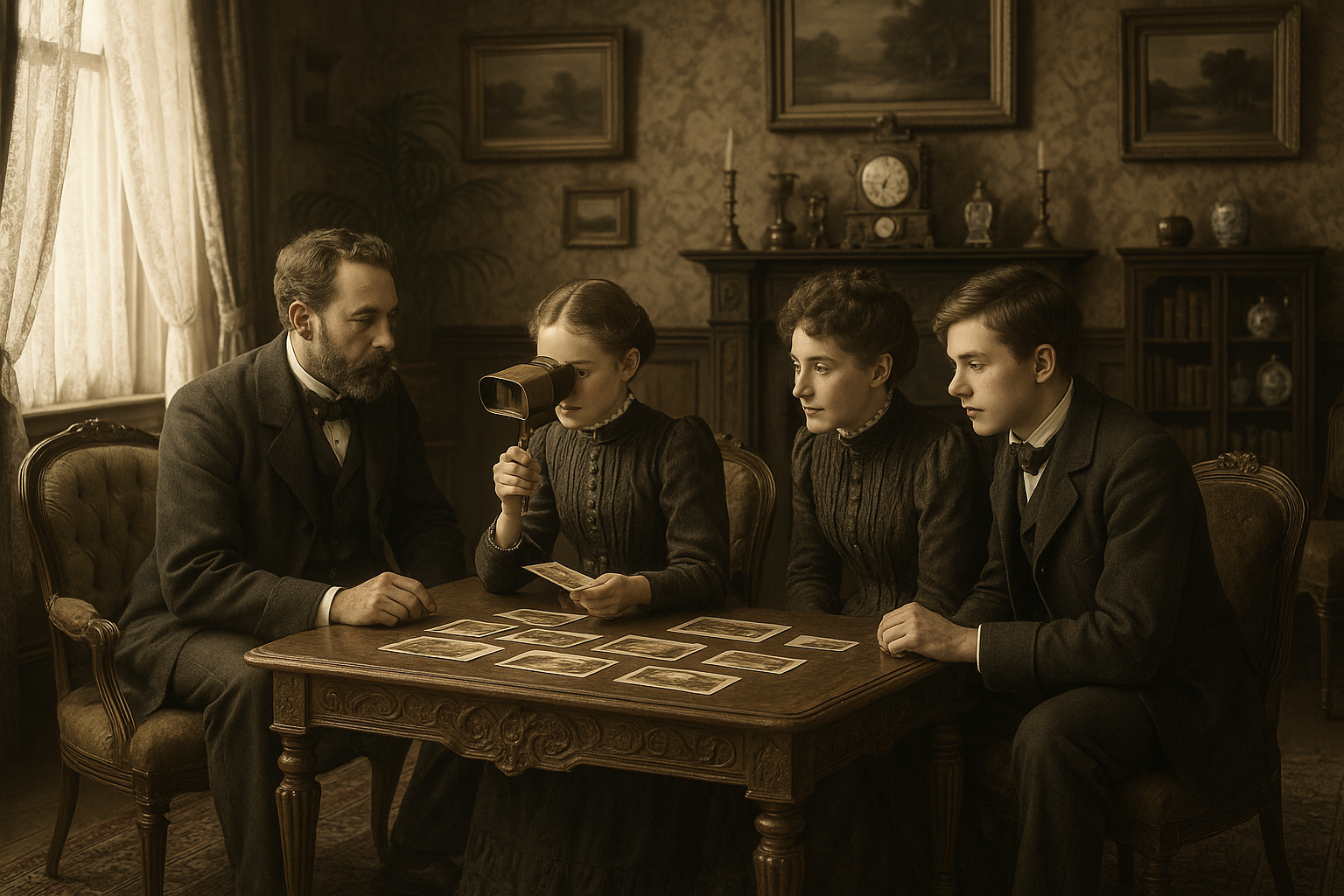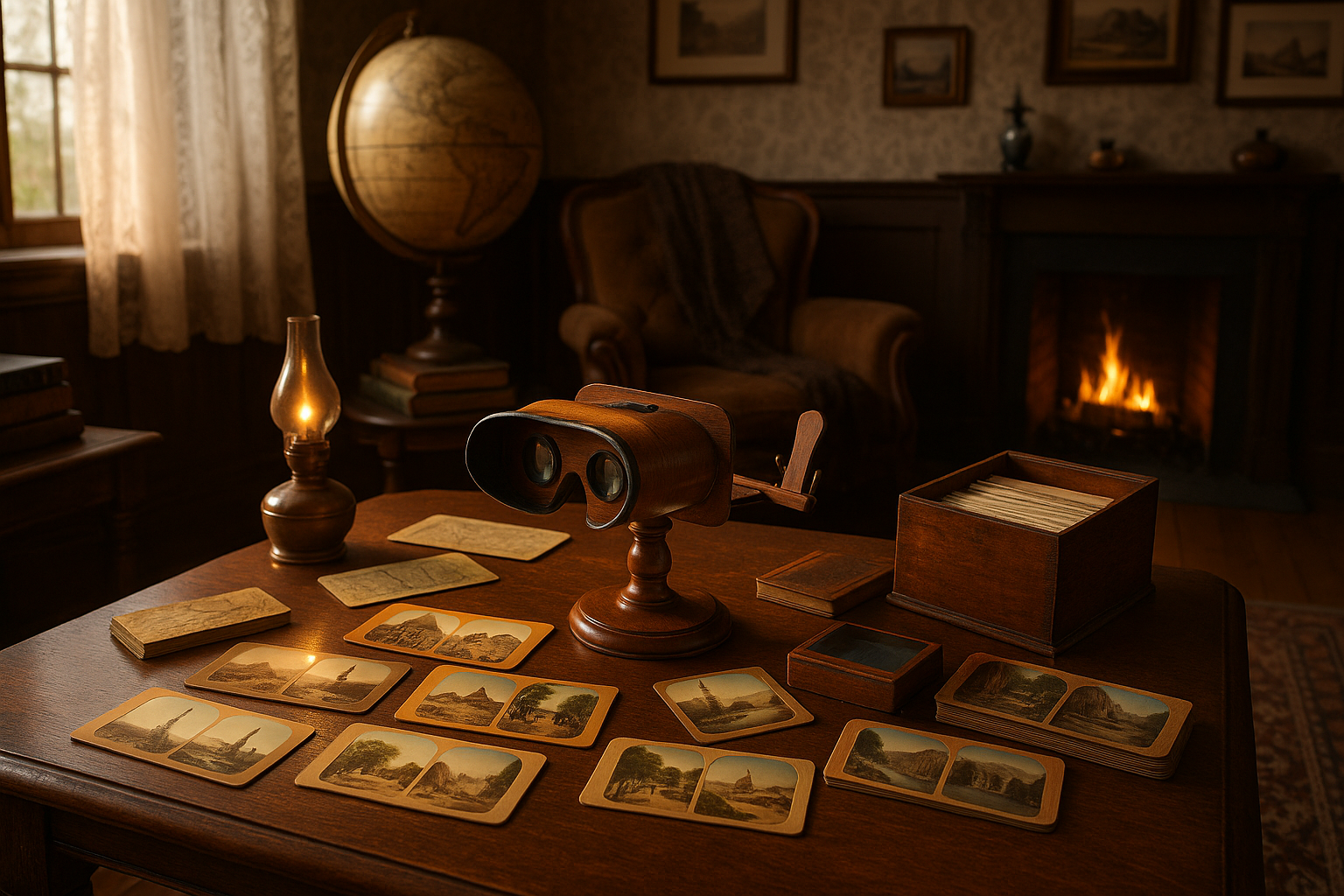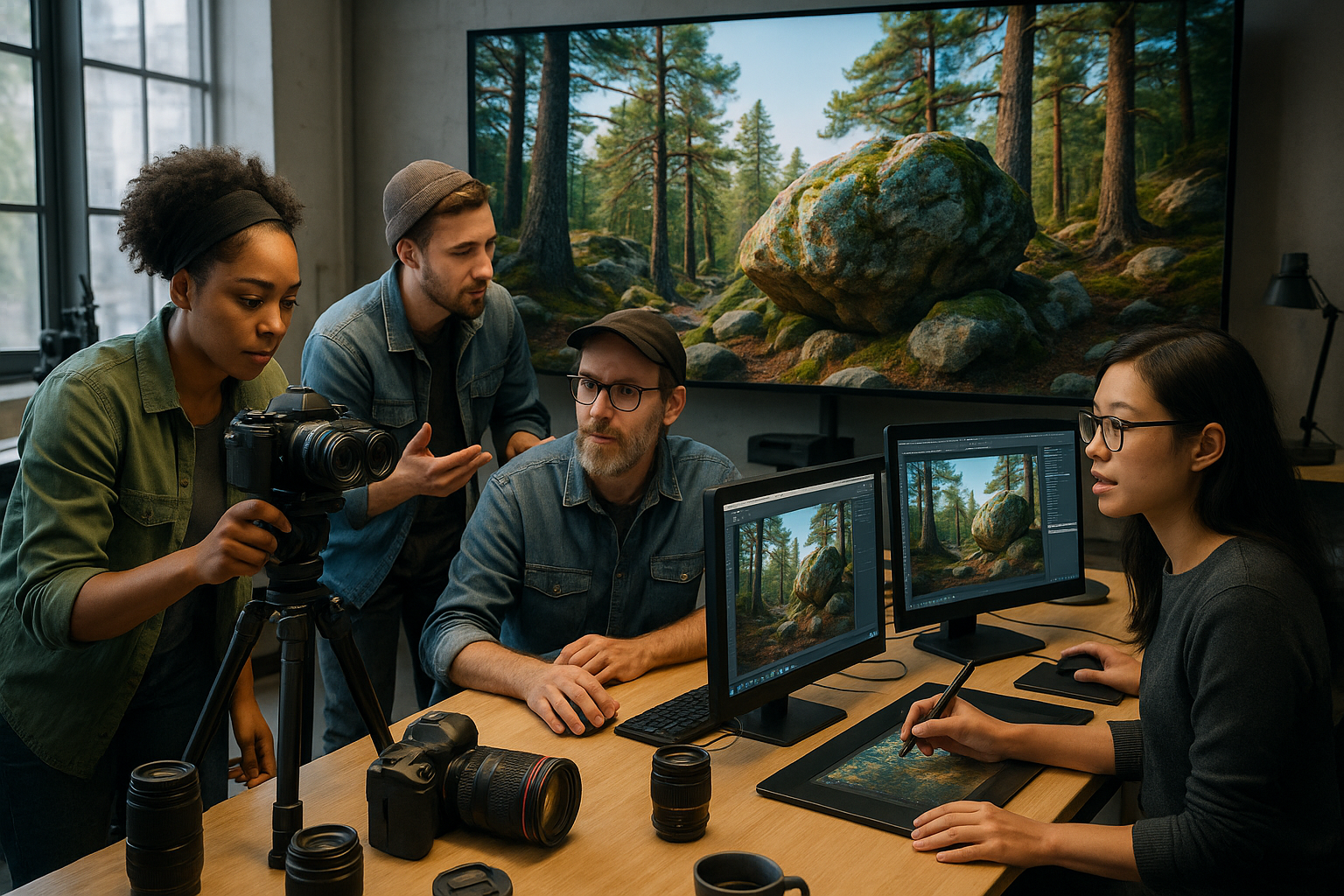In the shadowy workshops of medieval Europe, amid the clatter of metal and the scent of burning oil, a silent revolution was taking place. This was a time long before our modern digital age, yet it laid the groundwork for a profound leap in human understanding of the universe. At the heart of this transformation were the lens grinders, unsung artisans whose meticulous craftsmanship and innovative spirit paved the way for advancements in optical technology. These masters of precision took simple pieces of glass and, through skill and patience, transformed them into tools that would expand the horizons of science, art, and exploration. Their work not only illuminated the mysteries of the heavens but also allowed us to peer deeper into the fabric of our world, igniting a new era of inquiry and discovery.
This article embarks on a journey to uncover the intricate craft of medieval lens grinders, delving into the techniques and tools that defined their trade. We will explore the history and evolution of lens grinding, tracing its origins from ancient experiments with crude magnifiers to the sophisticated lenses that powered the Renaissance. Along the way, we’ll meet the fascinating figures who pioneered these advancements, driven by curiosity and an unyielding desire to push the boundaries of what was known. These individuals, often working in obscurity, left an indelible mark on history through their relentless pursuit of clarity and precision. Their legacy is reflected in the lenses that enabled the likes of Galileo and Kepler to reshape our understanding of the cosmos.
Moreover, we will examine the broader impact of this craft on medieval society and beyond. The ripple effects of improved optical technology were felt far and wide, influencing fields as diverse as navigation, medicine, and the arts. The innovations of lens grinders helped to democratize knowledge, allowing a greater number of people to engage with complex ideas and phenomena. As we peel back the layers of this fascinating history, you will gain a deeper appreciation for the skill and ingenuity that characterized this pivotal chapter in technological development. So, sit back, adjust your focus, and prepare to be transported to a world where glass became a gateway to the infinite wonders of the universe. 🔍✨
The Historical Context of Medieval Lens Grinding
During the medieval period, the craft of lens grinding emerged as a crucial element of optical technology, laying the foundation for future advancements in fields like astronomy and medicine. This era marked a significant transition from mystical interpretations of vision and light to more empirical approaches that sought to understand and manipulate optical phenomena. The lens grinders of the Middle Ages were not merely artisans but pioneers who explored the intricate relationship between light and lenses, contributing to a deeper understanding of optics.
Lens grinding during this period was heavily influenced by the burgeoning intellectual environment of the time, particularly in regions like the Islamic world and later in Europe. The translation of ancient Greek texts into Arabic and Latin played a pivotal role in disseminating knowledge about optics. Scholars such as Alhazen (Ibn al-Haytham) significantly contributed to the theoretical understanding of optics, which, in turn, informed practical developments in lens crafting. The meticulous work of medieval lens grinders cannot be separated from these broader intellectual currents, as they embodied the experimental spirit of their age.
The tools and techniques developed by medieval lens grinders were remarkably sophisticated, considering the technological limitations of their time. They employed a range of materials, from glass to quartz, carefully selecting and shaping each piece to achieve the desired optical effect. This required not only technical skill but also an intuitive understanding of the properties of different materials. The process was labor-intensive and time-consuming, demanding precision and patience, qualities that defined the master lens grinders of the Middle Ages. For a deeper understanding of the historical context, check out this video on medieval lens grinding techniques by the History Channel.
Table: Comparative Analysis of Lens Grinding Techniques
| Aspect | Medieval Techniques | Modern Techniques |
|---|---|---|
| Material Used | Glass, Quartz | High-quality Optical Glass |
| Tools | Manual Grinding Tools | Automated Precision Tools |
| Time Required | Weeks to Months | Days to Weeks |
Note the stark contrasts in methods and materials used, reflecting both technological advancements and changes in demand over the centuries.
The Process and Techniques of Lens Grinding in the Medieval Era
Medieval lens grinding was a meticulous and demanding process that required a deep understanding of both material science and geometry. The artisans of this craft often began with raw glass or quartz, which had to be carefully selected for its clarity and uniformity. The initial step involved rough shaping the material into a form that closely resembled the desired lens. This was typically achieved using rudimentary but effective tools like files, chisels, and grinding stones, which the craftsmen used to chip away at the material, gradually refining its shape.
The next phase of lens crafting involved the fine grinding of the lens surface to achieve the necessary curvature and smoothness. This was an incredibly precise task that demanded a steady hand and an acute eye for detail. Artisans employed a variety of abrasives, often made from substances like emery or pumice, to gradually wear down the lens surface, ensuring it was perfectly smooth and free of imperfections. This stage could take weeks or even months, depending on the complexity of the lens and the level of precision required.
Once the lens had been ground to the desired specifications, the final step was polishing, a process that enhanced the transparency and optical quality of the lens. This was typically done using a softer abrasive, such as rouge, and involved painstakingly buffing the lens to a high shine. The result was a lens capable of bending light in precise ways, essential for applications in magnification and vision correction. For an in-depth look at the process, watch this insightful video: “The Art of Medieval Lens Crafting” by Medieval Craftsmanship.
Key Techniques in Medieval Lens Grinding
- Rough Shaping: Initial shaping of glass or quartz using files and chisels.
- Fine Grinding: Precision shaping using abrasives like emery or pumice.
- Polishing: Final smoothing and buffing to enhance optical clarity with materials like rouge.
Each step required not only skill but also a deep understanding of the physics of light and materials, reflecting the intricate knowledge held by medieval craftsmen.
The Influence of Medieval Lens Grinders on Modern Optics
The contributions of medieval lens grinders extend far beyond their historical context, laying essential groundwork for modern optics. Their innovations in lens crafting techniques directly influenced the development of early optical instruments such as spectacles, telescopes, and microscopes, which revolutionized scientific inquiry and exploration. The legacy of these artisans is evident in the precision and sophistication of contemporary optical technologies.
The transition from rudimentary spectacles to complex optical devices exemplifies the profound impact of medieval lens grinding. Spectacles, initially developed to aid vision, evolved over time as more precise lenses were crafted, enhancing their effectiveness and accessibility. This evolution paved the way for the invention of the telescope in the early 17th century, which enabled astronomers to explore the cosmos with unprecedented clarity. The techniques and principles established by medieval lens grinders provided the necessary foundation for such groundbreaking advancements.
Furthermore, the meticulous craftsmanship and experimental spirit of medieval lens grinders resonate in today’s optical engineering and design practices. Modern optical technology, from cameras to laser systems, owes much to the pioneering work of these early artisans. Their dedication to understanding and manipulating light remains a cornerstone of contemporary optical science. To see the influence of medieval techniques in modern optics, explore this fascinating video on the evolution of lenses by Science Today.
Impact of Medieval Lens Grinding on Modern Optical Instruments
| Instrument | Medieval Contributions | Modern Developments |
|---|---|---|
| Spectacles | Initial Lens Crafting Techniques | Precision Glasses and Contact Lenses |
| Telescopes | Foundational Principles of Lens Arrangement | Advanced Astronomical Telescopes |
| Microscopes | Basic Magnification Concepts | High-Power Electron Microscopes |
The table above highlights how medieval innovations served as a springboard for modern advancements in optical instruments.

Conclusion
Concluding an exploration into the intricate world of medieval lens grinders, it becomes evident that these artisans were not merely craftsmen, but pioneers of precision and innovation in optical technology. The journey through their meticulous work unveils a rich tapestry of skills, tools, and techniques that laid the groundwork for modern optical advancements. As we’ve delved into this fascinating subject, several key points have emerged that warrant a recap and reflection on their significance in both historical and contemporary contexts.
Firstly, the article highlighted the historical context in which medieval lens grinding emerged. At a time when the thirst for knowledge and exploration was burgeoning, the demand for improved optical devices became paramount. These artisans played a crucial role in advancing scientific inquiry and exploration by improving the quality and functionality of lenses, which in turn enhanced the capabilities of devices such as telescopes and microscopes. The ingenuity they displayed in crafting lenses with precision, often by hand and using rudimentary tools, speaks volumes about their expertise and dedication.
The second key point revolves around the tools and techniques employed by these medieval lens grinders. Despite the absence of modern technology, these artisans developed sophisticated methods for grinding and polishing lenses. Their workshops were the crucibles of innovation where simple materials like glass were transformed into instruments of great utility and beauty. Through trial and error, they perfected techniques such as spindle grinding and pitch polishing, which ensured that lenses were shaped and smoothed to exacting standards. These techniques, though ancient, laid the foundational principles for lens crafting that are still in use today.
Furthermore, the article delved into the broader impact of these advancements on society. The improved optical devices facilitated not only scientific discoveries but also practical applications in navigation and daily life. As explorers ventured further afield, the precision lenses enabled more accurate charting of the stars and seas, which was crucial for navigation. Moreover, the accessibility to better optical instruments sparked a broader intellectual curiosity, contributing to the Renaissance’s flourishing of science and art. These lenses were not just tools but were gateways to new ways of seeing and understanding the world.
The third significant takeaway is the craftsmanship’s impact on modern optical technology. The legacy of medieval lens grinders is still evident today in the lenses that are integral to cameras, glasses, and high-tech equipment. Their pioneering spirit and commitment to excellence set a standard that continues to inspire optical engineers and craftsmen alike. By understanding the origins of these practices, modern professionals can appreciate the depth of knowledge and skill required to advance this field further.
In conclusion, the craft of medieval lens grinders is a testament to human ingenuity and the relentless pursuit of knowledge. It serves as a reminder of the profound impact that meticulous craftsmanship and innovative thinking can have on society. The legacy of these artisans underscores the importance of preserving traditional skills while embracing new technologies. As we continue to explore and innovate, the lessons learned from these masters of precision and innovation remain relevant.
I encourage you, dear reader, to reflect on the timeless lessons gleaned from the craft of medieval lens grinders. Consider how these principles of precision and innovation can be applied in your own life or field of work. Whether you are an engineer, a historian, or simply someone with a passion for knowledge, the story of these craftsmen offers inspiration and a call to action. Share this article with others who may find value in understanding the roots of optical technology, and feel free to leave a comment sharing your thoughts and insights. Your engagement helps keep the spirit of curiosity and learning alive.
For further reading on this topic, you may explore resources such as the “Journal of the History of Optics” [link not provided] and “Medieval Technology and Social Change” [link not provided], which delve deeper into the historical and technical aspects of lens grinding and its societal implications.
Let us honor the legacy of these medieval artisans by continuing to push the boundaries of what is possible, fueled by the same spirit of exploration and innovation that guided their hands centuries ago. 🌟
Toni Santos is a visual historian and artisan whose creative lens is captivated by the forgotten marvels of antique optical devices. Through his thoughtful storytelling, Toni revives the instruments that once transformed light into wonder—camera obscuras, magic lanterns, kaleidoscopes, and other ingenious tools that shaped our earliest visual imaginations.
His journey is rooted in a fascination with how humans have long sought to bend, reflect, and reveal the unseen. Whether tracing the mechanical poetry of 19th-century projectors or illustrating the tactile elegance of early lenses, Toni’s work invites us to see vision itself as an evolving art form.
Blending handcrafted design with historical inquiry, Toni brings to life the material soul of these devices—celebrating not just how they functioned, but what they meant. His creations and curated stories illuminate a world where science, illusion, and beauty were intricately linked through glass and brass.
As the curator of Vizovex, Toni shares detailed studies, reconstructed artifacts, and immersive content that help others rediscover the origins of visual technology and the magic of analog perception.
His work is a tribute to:
The craftsmanship behind early visual instruments
The wonder of seeing through the eyes of another century
The intersection of optics, art, and imagination
Whether you’re a collector, a designer, or someone drawn to the lost poetry of vision, Toni welcomes you into a world where light is a storyteller—one prism, one lens, one forgotten invention at a time.





